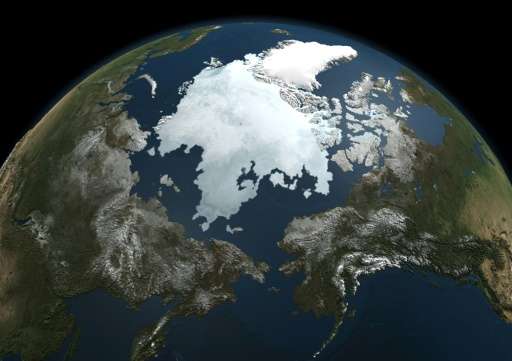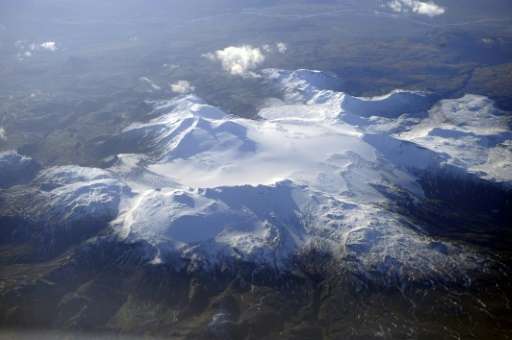Overheated Arctic sign of climate change 'vicious circle'

Freakishly high temperatures in the Arctic driven by heat-packed oceans and northward winds have been reinforced by a "vicious circle" of climate change, scientists said Thursday.
Air above the Polar ice cap has been 9-12 degrees Celsius (16.2 to 21.6 degrees Fahrenheit) above average during the last four weeks, according the data from the Danish Meteorological Institute (DMI), which tracks hourly changes in Arctic weather.
And during several days last week, temperatures above the North Pole were a balmy zero degrees Celsius (32 degrees Fahrenheit), a full 20C (36F) above the levels typical for mid-November, said Martin Stendel, a DMI climate researcher based in Copenhagen.
"This is by far the highest recorded" in the era of satellite data, starting in 1979, he told AFP.
"What we are observing is very unusual."
At this time of year, open Arctic ocean exposed by sea ice melted away in summer should be freezing again, with thousands of square kilometres icing over every day.
But that has not been happening, at least not at the same pace, said Stendel.
"Not only was the ice not growing as it would normally, there was further melting due to warm air coming in," he explained by phone.
The US National Snow and Ice Data Center reported that sea ice extent in October was the lowest on record, some 6.4 million square kilometres (2.5 million square miles).
Ice cover at the top of the globe shrank to its smallest area in 2016—some 4.14 million sq km (1.6 million sq miles)—on September 16.
Several factors have caused the Arctic to overheat since late October, say scientists.
The most immediate are warm winds sweeping up from western Europe and off the west coast of Africa.
"The winds carrying this heat is a temporary—and fairly unprecedented—weather phenomenon," said Valerie Masson Delmotte, a scientist at the Climate and Environment Sciences Laboratory in Paris.
Only since Thursday have they abated.
Mirror effect
A second contributor is the record-strong Pacific Ocean El Nino that tapered off earlier this year—after pumping a couple tenths of a degree of added warming into the atmosphere.
But reinforcing these periodic, if powerful, drivers is the biggest one of all: global warming, experts agreed.

"The long-term decline in sea ice in the Arctic can be attributed to climate change," said Ed Blockley, lead scientist at the UK Met Office's Polar Climate Group.
Manmade climate change caused by heat-trapping greenhouse gases has already pushed up Earth's average surface temperature by 1.0 C (1.8 F) since the pre-industrial era.
It the Arctic, however, the pace of warming has been twice as fast, caused in part by a vicious circle that scientists call "positive feedback".
About 80 percent of solar radiation from the Sun bounces back into space when it falls on white snow and ice, what Delmotte called a "mirror effect".
But when those same sunrays hit deep blue sea—far more of which is now exposed—80 percent of that warmth is absorbed into the water instead, and stored there.
"If you look at the extent of sea ice, then you can see the vicious circle right away, because there's a clear downward trend," said Stendel.
And in the short term, that exposed sea water is slowing the reformation of ice.
At just under zero degrees Celsius, the sea water is vastly warmer "compared to the ice that should be there", Stendel added.
Air temperatures above the thick layer if ice replaced by open sea "are generally minus 30 to minus 40 Celsius".
The loss of ice cover could have far reaching consequences.
"It amplifies global warming in general, and increases warming especially in nearby continents," Delmotte told AFP.
One of those neighbouring land masses Greenland, whose huge ice sheet—melting rapidly—contains enough water to lift global sea levels by several metres.
© 2016 AFP




















